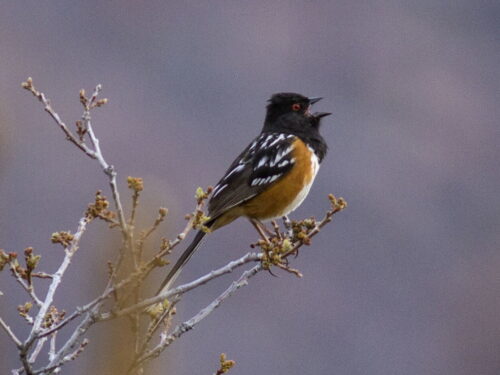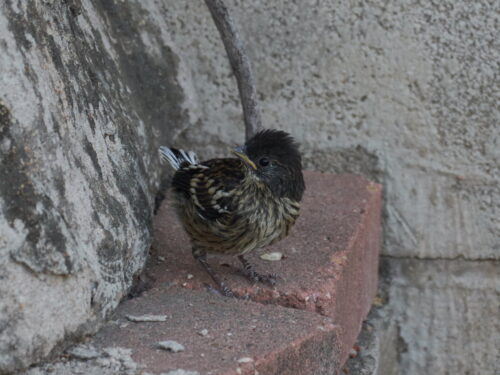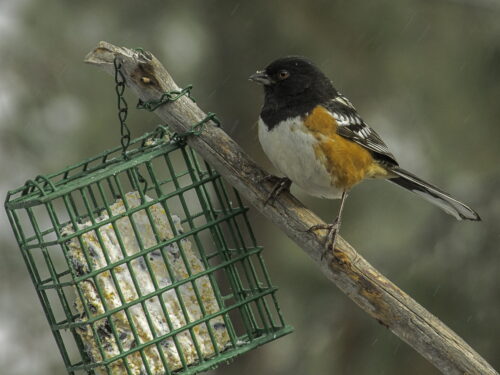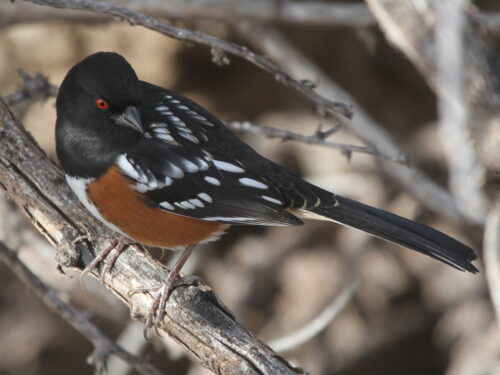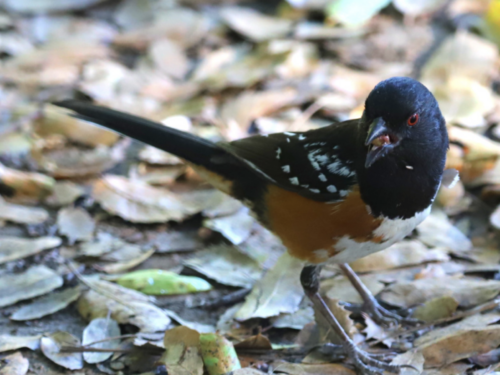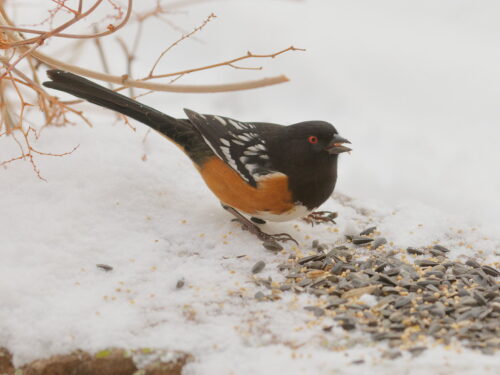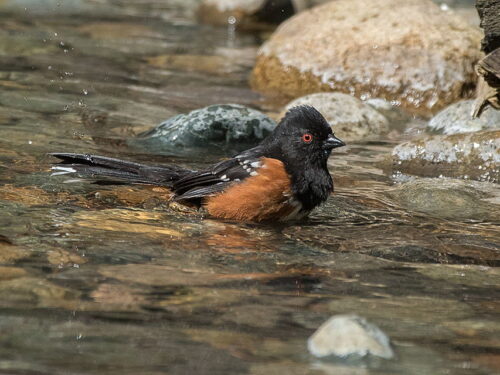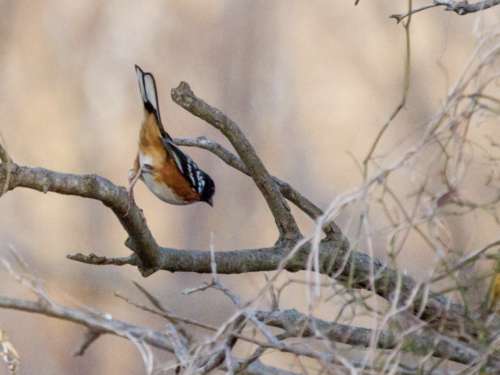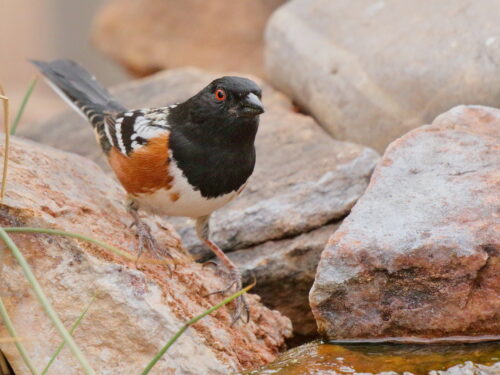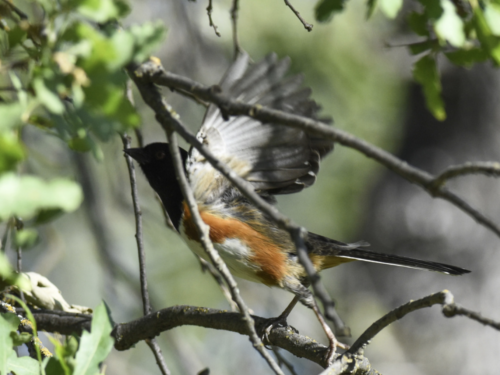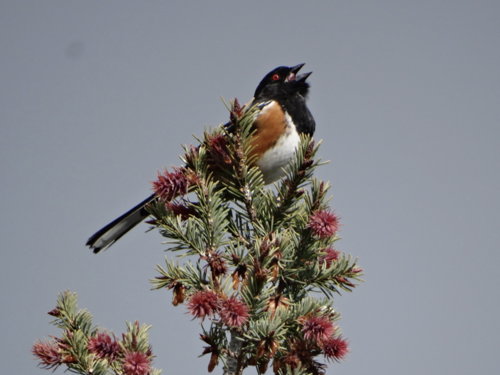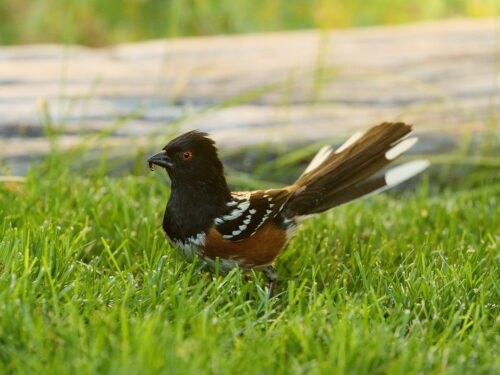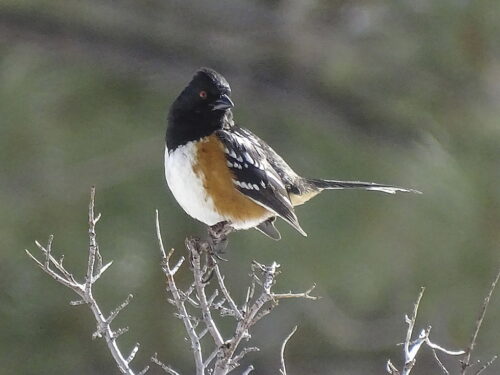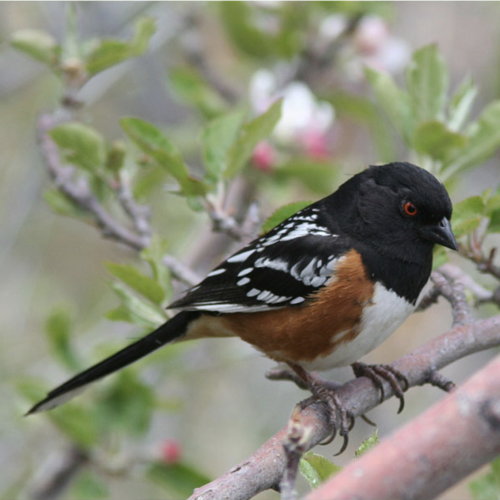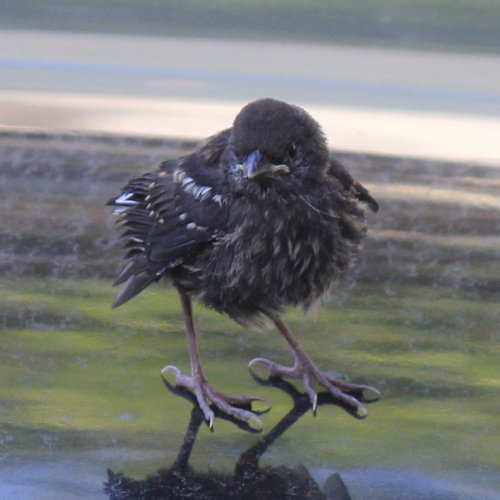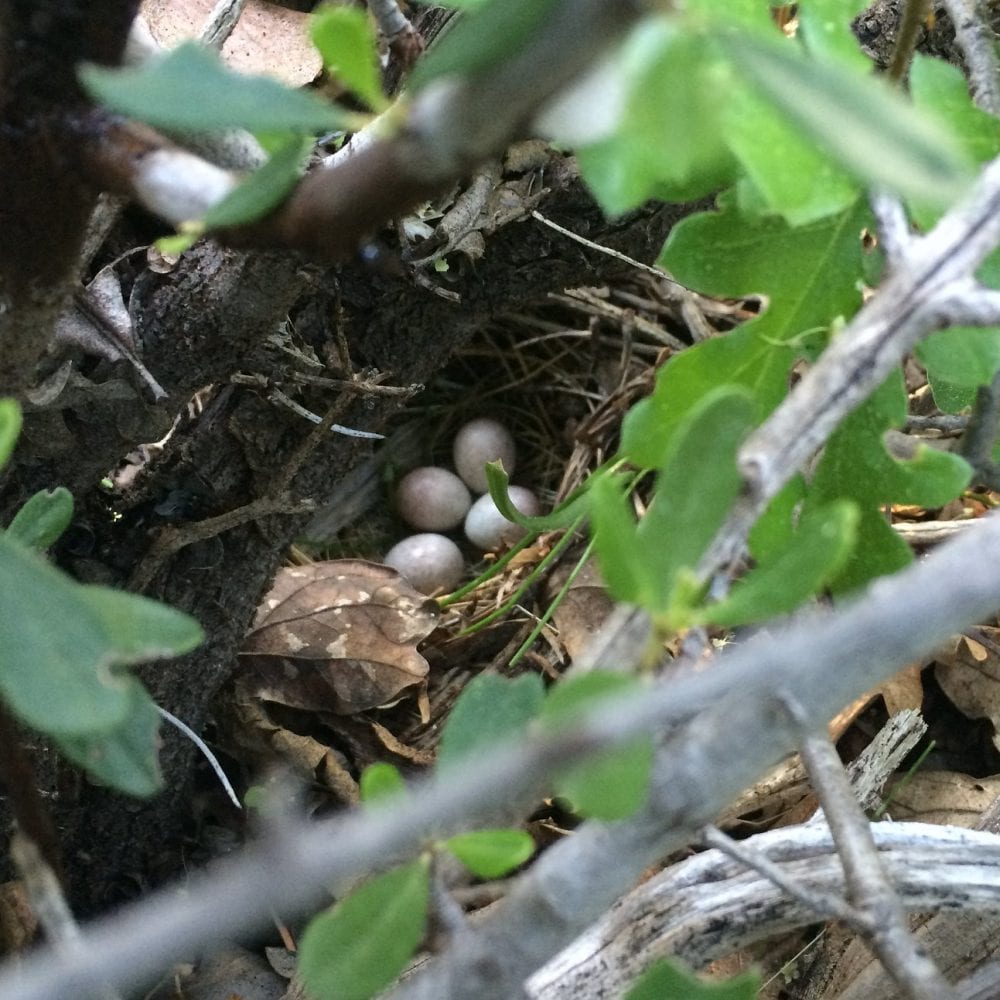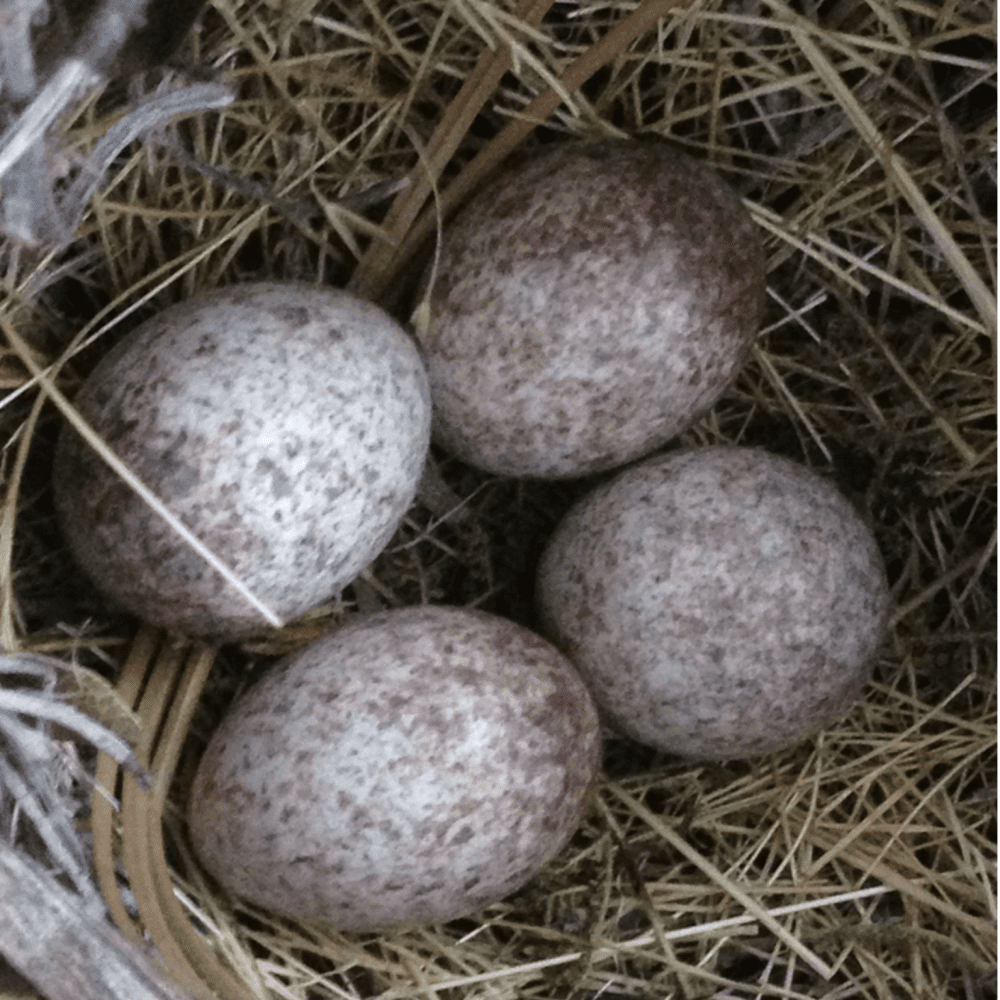Spotted Towhee
Scientific Name: Pipilo maculatus
Type: Bird
Family: Passerellidae (New World Passerines)
Size: 6.7 to 8.3 inches long; 11-inch wingspan
Weight: 1.2 to 1.7 ounces
Life Span: up to 10 years
Physical Description
The Spotted Towhee is a large sparrow with a rounded head and wings, a thick bill, and brightly colored field markings. Males have jet-black upperparts and throat, black wings with white spots, rusty-colored flanks, white belly, and red eyes. Females have the same pattern but are gray-to-brown where the males are black. Before they develop their adult plumage, juveniles look more like a typical sparrow with with subdued brown streaks.
Range and Habitat
Spotted Towhees can be found in western North America from Canada to Guatemala. Migration among spotted towhee populations is variable. Some groups are year-long residents, others will travel to lower elevations for winter, while some travel southward to spend the winter in parts of the western and southwestern United States.
Spotted towhees reside in areas with open, shrubby habitat with thick undergrowth as well as in thickets along forest edges. They can also be found in pinyon-juniper woods, backyards and overgrown fields. They prefer areas with abundant ground cover such as leaf litter which provides them with an ideal foraging spot.
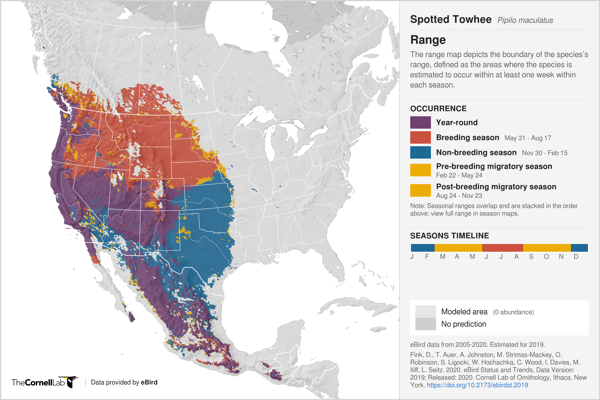
Diet
Spotted towhees mainly catch and eat high protein ground-dwelling arthropods such as beetles, caterpillars, moths, spiders, and snails during spring and summer. In the fall and winter they switch to eating more acorns, seeds, and berries. In addition, they are frequent visitors to bird feeders with cracked corn, peanuts, suet, and sunflower seeds.
Behavior and Social Life
Spotted towhees are active during the day but unlike other songbirds are not social. They do not interact with each other except during breeding season and can be antagonistic towards intruders — flicking and spreading their tails and flapping their wings. Although capable of flying long distances, spotted towhees usually fly in short hops from one spot of cover to the next.
While feeding on the ground, spotted towhees use a two-footed, backwards-scratching hopping technique to rummage through leaf litter looking for seeds and small invertebrates. This foraging method generates a distinctive rustling sound resulting in spotted towhees are often being heard before being seen.
Although spotted towhees spend a large portion of their time on the ground they will also sit in the lower branches of trees in order to search for food or to sing. The call of spotted towhee is quick, buzzy, and often variable.
Life Cycle
Pairing for spotted towhees begins as early as February. Males sing to attract a mate and to defend their territories. In April, the females will pick out a nest site either on the ground or close to it. The nest is built of bark, grass, and leaves and lined with finer material like animal hair. It is usually well concealed by surrounding plants.
Females lays 3 to 5 creamy white to gray eggs and incubate them for 12 to 14 days. Both parents feed the young. The young birds leave the nest at 9 to 11 days, but do not fly for at least another 6 days. Both parents continue to feed the young for about 30 days after this. There is usually only one brood per pair per season.
Foraging
Calling
Hatchlings
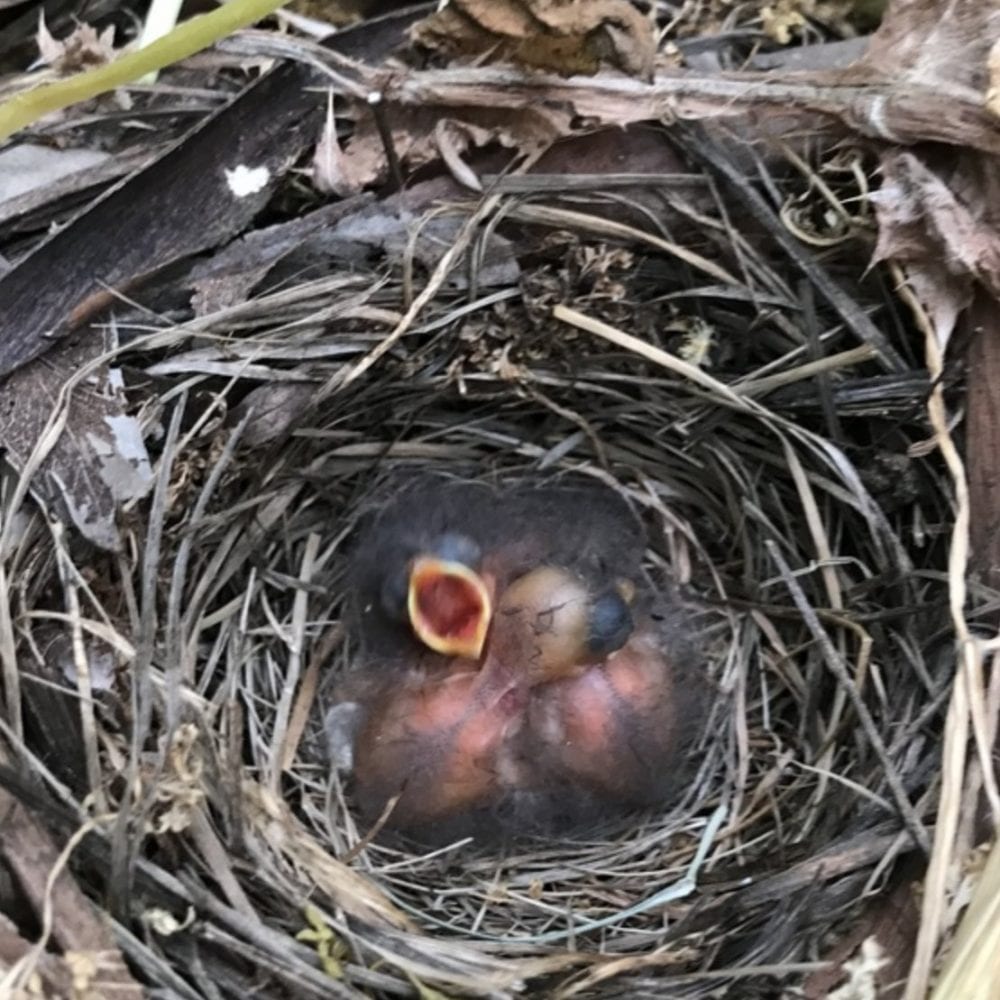
Title
Ecological Role
Spotted towhees are important in consuming insects that are pests and in helping to distribute the seeds of various plants.
In addition, they serve as prey for a variety of predators. Adult spotted towhees are mostly taken by large birds like hawks and owls. Whereas eggs and nestlings are preyed upon by snakes and small mammals such as mice, squirrels, and chipmunks.
Interactions With Humans
There are not any documented positive or negative effects of spotted towhees on humans. However, the scratching hop that they do when in dry leaves searching for bugs does provide a source of amusement for most individuals.
Interesting Facts
- The spotted towhee and the eastern towhee were considered to be the same species called the rufous-sided towhee until 1995.
- Male towhees have been recorded spending 70% to 90% of their mornings singing during breeding season.
- In contrast, once a male mates, he only spends about 5% of his time singing.
- It has been postulated that the spotted towhee’s white spots are a form of camouflage.
- Spotted towhees sometimes sun themselves by lying down with their feathers spread out.
- They will bathe in the dew or fog that has collected on vegetation.
- Nesting females have been seen to run away when disturbed rather than flying away.
- A group of towhees is called a “tangle” or a “teapot”.
- When two towhees fight, one bird will pick up a piece of twig and carry it around suggesting that this is a sign of submission.

